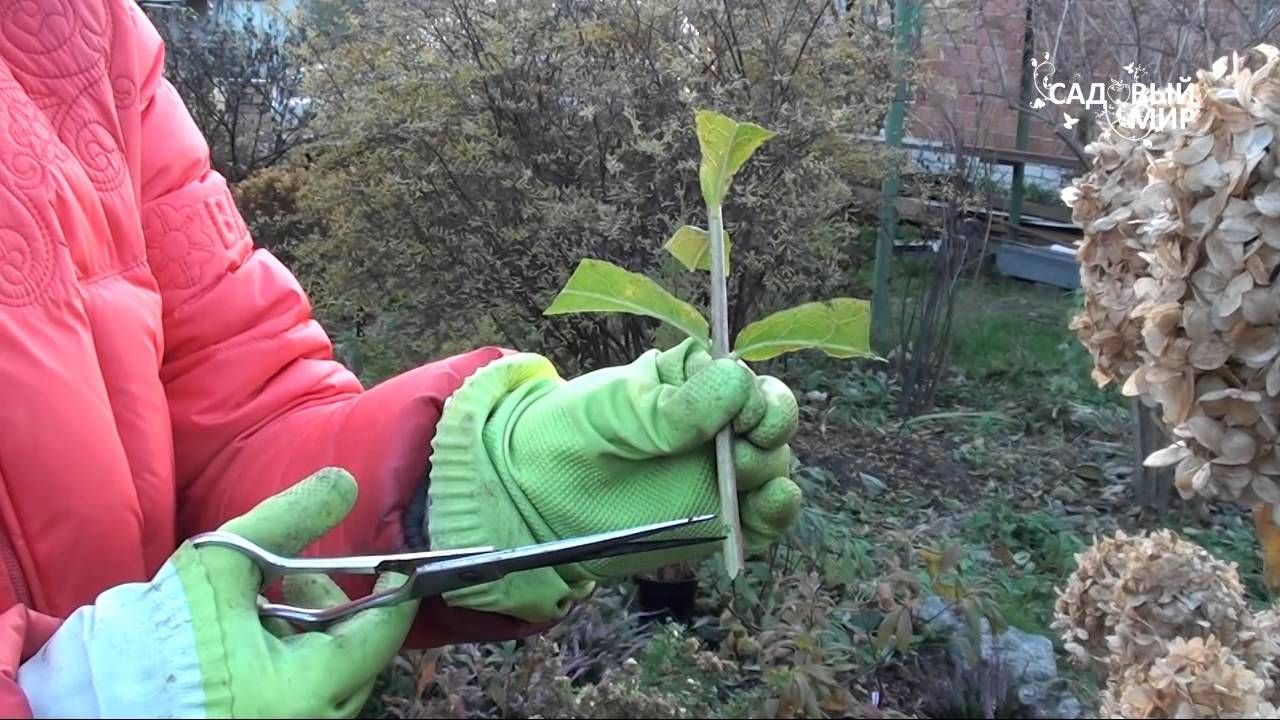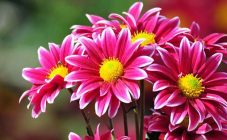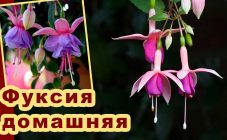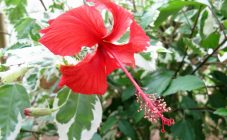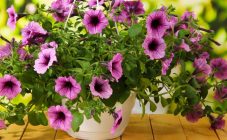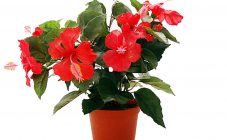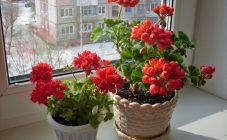Content:
Blooming hydrangea with huge caps of bright buds attracts attention with its amazing and austere beauty. Charming flowers of various color shades delight with their beautiful appearance. Even one bush of hydrangea can transform the whole garden, add elegance and charm to it.
Description of culture
Many flower growers dream of growing this beautiful flower culture in their possessions. Getting to know the plant should begin with its botanical description:
- Hydrangea, the Latin name for Hydrangea, is a member of the vast family of Hortensia, which unites up to 70 different species.
- Flower culture form. The plant can be in the form of a shrub, a single small tree or liana.
- Green leaves with small veins and sharp tops reach a fairly large size.
- Bloom. The buds are formed into lush inflorescences and the external shape resembles a ball, umbrella or panicle. Flowering begins in late spring and continues until late autumn.
- Colors. The variety of color shades is simply amazing: white, cream, pink, dark purple, blue and red inflorescences successfully stand out against the background of green foliage. An interesting feature of hydrangea flowers was noticed: at first, the opened buds are white in color and gradually change their monochromatic color to color.
- Fetus. After flowering, instead of buds, a seed box is formed with 2-5 sections filled with small seeds.
- Hydrangea is grown as a perennial crop.
The cherished dream of a gardener - to breed such a beauty in his garden, begins with a completely understandable question of how to propagate a hydrangea. There are several breeding methods: by dividing the bush, by layering of green shoots and by cuttings.
Propagation of hydrangea by cuttings
Of all types of reproduction, the best and most effective effect is the reproduction of hydrangea by lignified cuttings. This method is good because it allows you to grow a new seedling with identical varietal characteristics of the parent plant. Propagation of hydrangea by cuttings is carried out in several stages:
- Selection of planting material. Cuttings are harvested from shoots that have formed in the current year. For this purpose, twigs with one or more buds of the leafy part of the stem are used.
- Propagation of hydrangea by cuttings gives excellent results if the shoots of the lateral parts that grew on the growths last year are used for cutting. The only condition is that these branches must have large, well-developed kidneys without external signs of diseases.
- Cutting preparation. Correct preparation of the stem part of the plant guarantees successful rooting of the cuttings. It is best to start harvesting planting material in the morning, when the plant cells are maximally filled with moisture. The cut branches must be immediately divided into cuttings and placed in water.
- Rooting hydrangea cuttings. To know how hydrangea propagates by cuttings, you should familiarize yourself with the rules for planting prepared shafts.It is necessary to prepare a planting mixture from garden soil, peat and sand and fill boxes or containers with it for planting. A drainage layer is pre-laid at the bottom, the ground is watered abundantly with water and cuttings are planted. The seedlings are covered with transparent film or glass, placed in a warm and bright place for rooting.
After about a month, tiny green leaves appear on the shanks, which is a signal that the plant is rooting. These simple agronomic techniques answer the question: how to propagate a hydrangea at home and grow a new plant.
Reproduction by varieties
The Hortensia species is very numerous - at present, several dozen varieties of this beautiful plant are known. In central Russia, paniculate and large-leaved crops are mainly grown from the extensive species of Hortensia. Before propagating hydrangea, it is recommended that you familiarize yourself with some of the breeding features of its most popular species:
- Panicle hydrangea. The cultivation of this species is carried out by cuttings. The best period for harvesting cuttings is summer, namely the last decade of June. On prepared shafts, leaves are left in full and rooted exclusively in well-moistened sand.
- Large-leaved hydrangea. Reproduction by cuttings is carried out throughout the summer. Since the wintering of young seedlings is considered the most vulnerable place, it is better to insure yourself and plant some of the cuttings in a greenhouse or greenhouse, and in their absence, plant the shanks in a flowerpot. In indoor conditions and for home maintenance, a large-leaved hydrangea is placed in a cool place, with a temperature of 12 to 15 degrees Celsius; in properly created conditions, the plant can please with its flowering by spring.
Shrub treelike hydrangeas are not so demanding on the method of reproduction, therefore they are bred with seeds, layering of shoots, dividing the mother bush and cuttings. The most productive methods are reproduction by cuttings and the formation of layering. As cuttings, you can use cut branches after the spring or summer pruning of an adult plant.
Reproduction by dividing the bush in spring
Many gardeners consider the method of dividing a bush to be the simplest and most effective method of propagating any plant. It is difficult to disagree with this statement. There is nothing easier than to divide the bush together with the root part into several parts in spring and plant the divisions in new places. Planting is carried out in pre-prepared planting pits filled with a nutritious earthy mixture of compost, peat, with the addition of wood ash.
Cutting hydrangeas is a more laborious and costly method that requires a lot of patience and attention from the gardener. The main advantage of this type of hydrangea cultivation is the ability to grow several new plants from one shoot, and new specimens are obtained with all the varietal characteristics of the selected variety of flower culture.
The choice of how to propagate and plant a hydrangea depends on the type of plant and the gardener's desire to spend his free time.
How to plant cuttings at home
Hydrangea cuttings can be carried out in spring, summer and autumn:
- For spring harvesting, parts of lignified shoots remaining after pruning are used. Cut branches are placed in water for several days so that all plant cells are properly saturated with life-giving moisture. After two to three days, the shafts are cut in such a way that from 3 to 5 buds remain on each segment.The planting boxes are filled with light soil consisting of sand and peat and moistened abundantly. So that the cuttings do not rot from standing waters, a drainage layer is laid on the bottom of the planting containers. Prepared cuttings at a slight angle are planted in the ground and covered with transparent film or glass. Only next year will the tiny hydrangeas be ready to be planted outdoors.
- Summer seating of cuttings. Summer cuttings are carried out in the middle of summer from the green shoots of this year, which at this time have not yet become completely woody. For cuttings, the upper parts of the plant are cut off, the leaves are partially shortened. The prepared parts of the plant are planted in a moist mixture of sand and peat and covered with glass or foil. The seedlings are periodically ventilated and watered with water at room temperature. In a month, the cuttings take root, the first signal for the formation of their own roots in new seedlings will be the appearance of new green leaves.
- Autumn propagation by cuttings. Wondering how to propagate hydrangea in the fall? Cuttings harvested in the fall are stored in the sand in dense plastic bags placed in the cellar or on the lower shelf of the refrigerator. At the end of winter, the shanks are planted in boxes or other planting containers filled with a nutrient substrate. For disinfection of the plant and better survival rate, it is recommended to dip the tip of the seedling in a mixture of heteroauxin and talc. After planting, the cuttings are covered with glass jars and, after rooting, are planted in greenhouses in the spring. At the end of August, matured seedlings are planted in a garden or flower garden in a permanent, well-lit place.
Reproduction of hydrangea, regardless of the breeding method, requires a lot of patience from the gardener and knowledge of the agrotechnical foundations of the principle of seasonal cuttings. The reward for the time spent and hard work will be the exquisite bloom of a beautiful flower, a real pearl of any garden.

